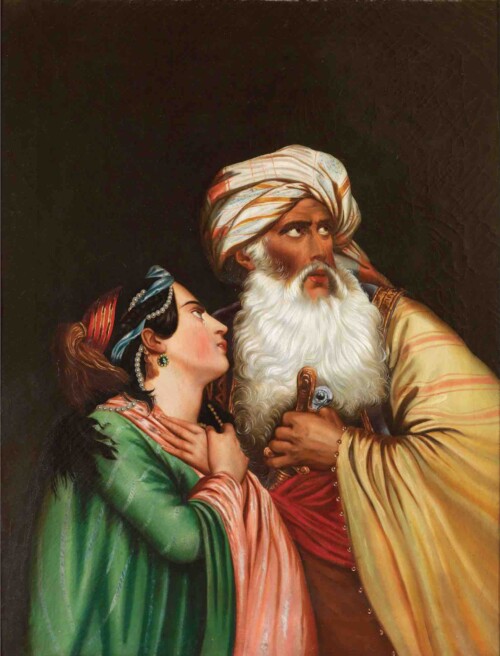| 30 |
19th century
Ali Pasha and Kyra Vasiliki
oil on canvas
circa 1850
89.5 x 70.2 cm
PROVENANCE
private collection, Athens
NOTE
This work is after Raymond Auguste Quinsac de Monvoisin (French, 1794-1870)
| sold for 3,737.50 € |
Ali Pasha (1741-1822) was the ruler of the Ottoman Empire’s European territory, whose court was in Ioannina in Epirus.Kyra Vasiliki (1789-1834) was a Christian Greek girl from the village of Plisivitsa near Filiates. At the age of twelve, she sought an audience with Ali Pasha to beg him to spare her father, Kitzos Kontaxis’, life. Ali Pasha granted her father pardon and married Kyra Vasiliki in 1808. She lived with his harem of over 600 women and was undoubtedly his favourite. Vasiliki had significant influence over her husband, a notoriously cruel and violent ruler, and often pleaded with her husband to save her fellow countrymen.
By 1820, Ali Pasha's appetite for power and independence proved too much for Sultan Mahmud II and the Sublime Porte in Constantinople. He was accused of treason, and Ottoman troops besieged the town of Ioannina for two years.
Ali Pasha and Kyra Vasiliki sought refuge in the monastery of Pandelimonos on an island in Lake Pamvotis. However, in January 1822, Ali Pasha was captured and executed, and his head was sent to decorate the gates of Constantinople. Kyra Vasiliki was sent as a prisoner to the Sultan, but her life was spared, and she was allowed to return to Greece. She died in Aitoliko, Central Greece, on December 11, 1834.
In the painting, Ali Pasha is depicted with Kyra Vasiliki, in an intimate moment just before his execution.
